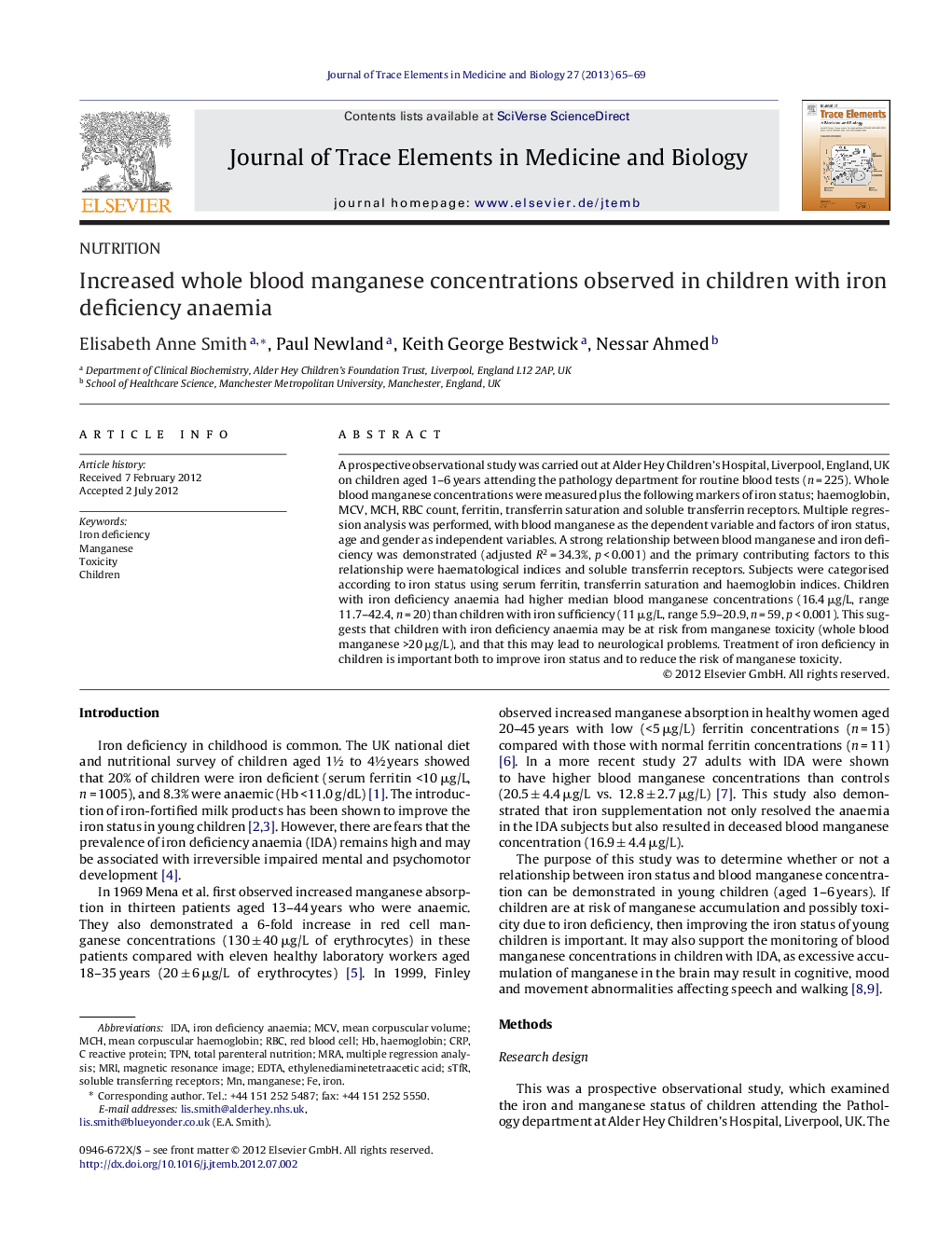| Article ID | Journal | Published Year | Pages | File Type |
|---|---|---|---|---|
| 1226572 | Journal of Trace Elements in Medicine and Biology | 2013 | 5 Pages |
A prospective observational study was carried out at Alder Hey Children's Hospital, Liverpool, England, UK on children aged 1–6 years attending the pathology department for routine blood tests (n = 225). Whole blood manganese concentrations were measured plus the following markers of iron status; haemoglobin, MCV, MCH, RBC count, ferritin, transferrin saturation and soluble transferrin receptors. Multiple regression analysis was performed, with blood manganese as the dependent variable and factors of iron status, age and gender as independent variables. A strong relationship between blood manganese and iron deficiency was demonstrated (adjusted R2 = 34.3%, p < 0.001) and the primary contributing factors to this relationship were haematological indices and soluble transferrin receptors. Subjects were categorised according to iron status using serum ferritin, transferrin saturation and haemoglobin indices. Children with iron deficiency anaemia had higher median blood manganese concentrations (16.4 μg/L, range 11.7–42.4, n = 20) than children with iron sufficiency (11 μg/L, range 5.9–20.9, n = 59, p < 0.001). This suggests that children with iron deficiency anaemia may be at risk from manganese toxicity (whole blood manganese >20 μg/L), and that this may lead to neurological problems. Treatment of iron deficiency in children is important both to improve iron status and to reduce the risk of manganese toxicity.
